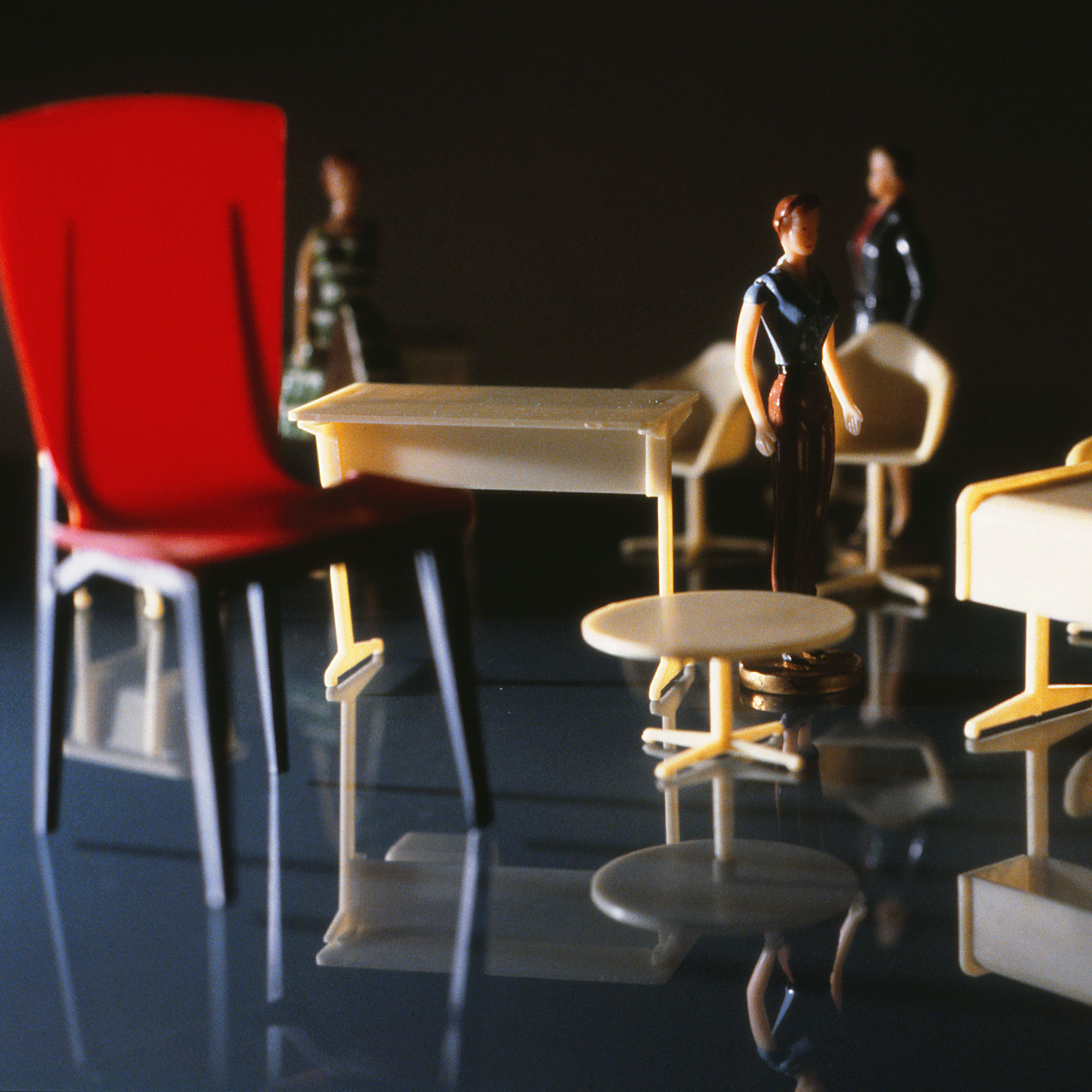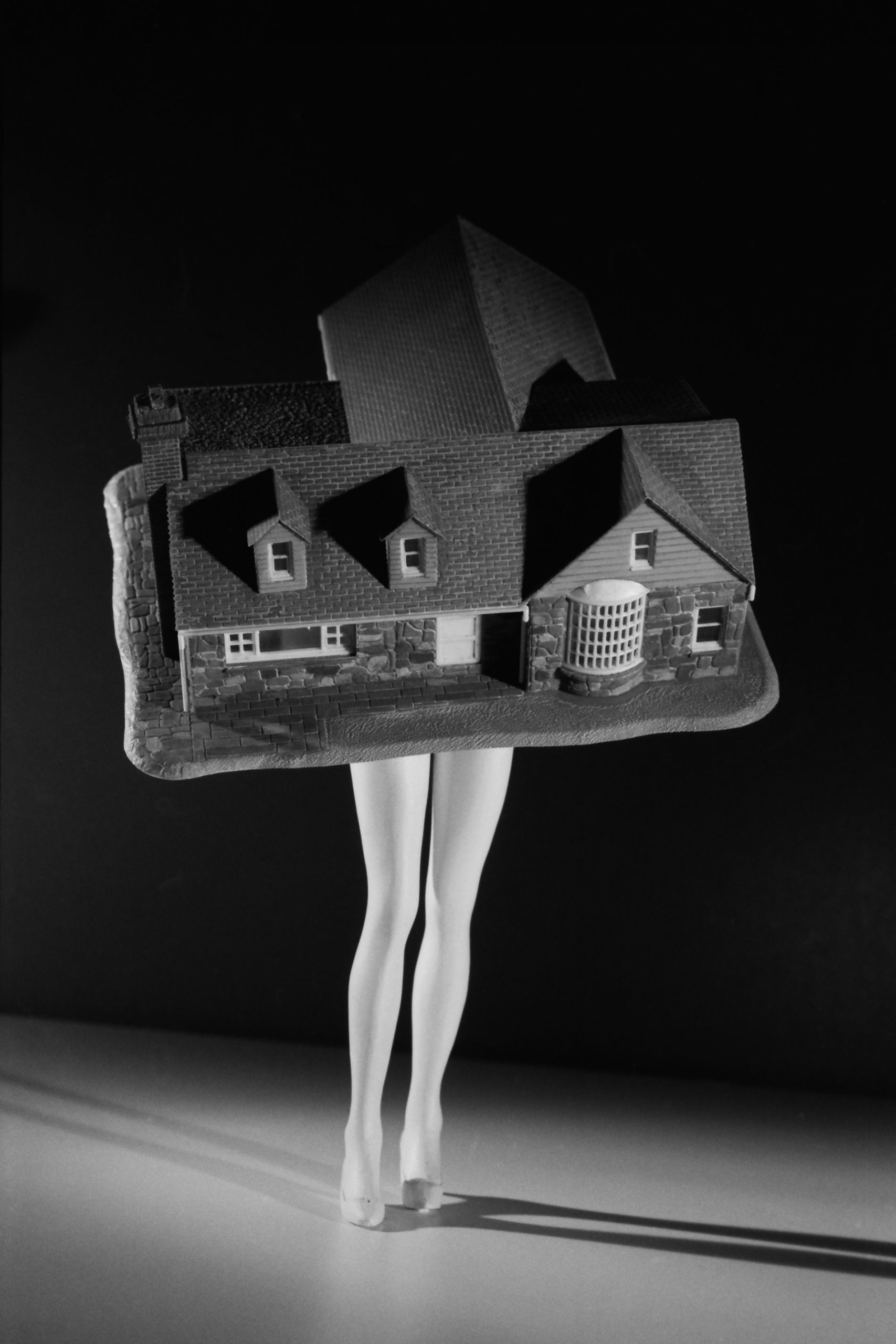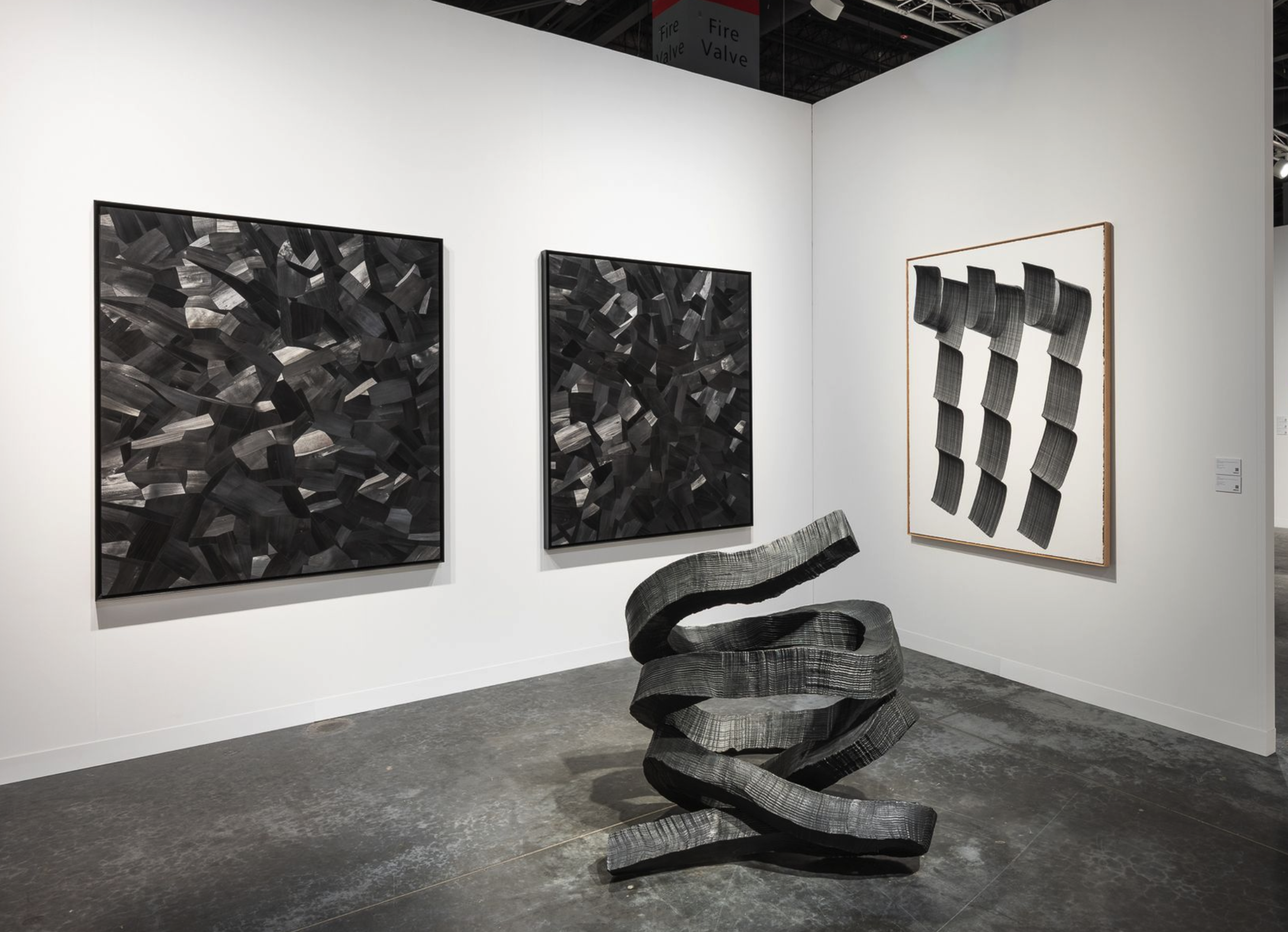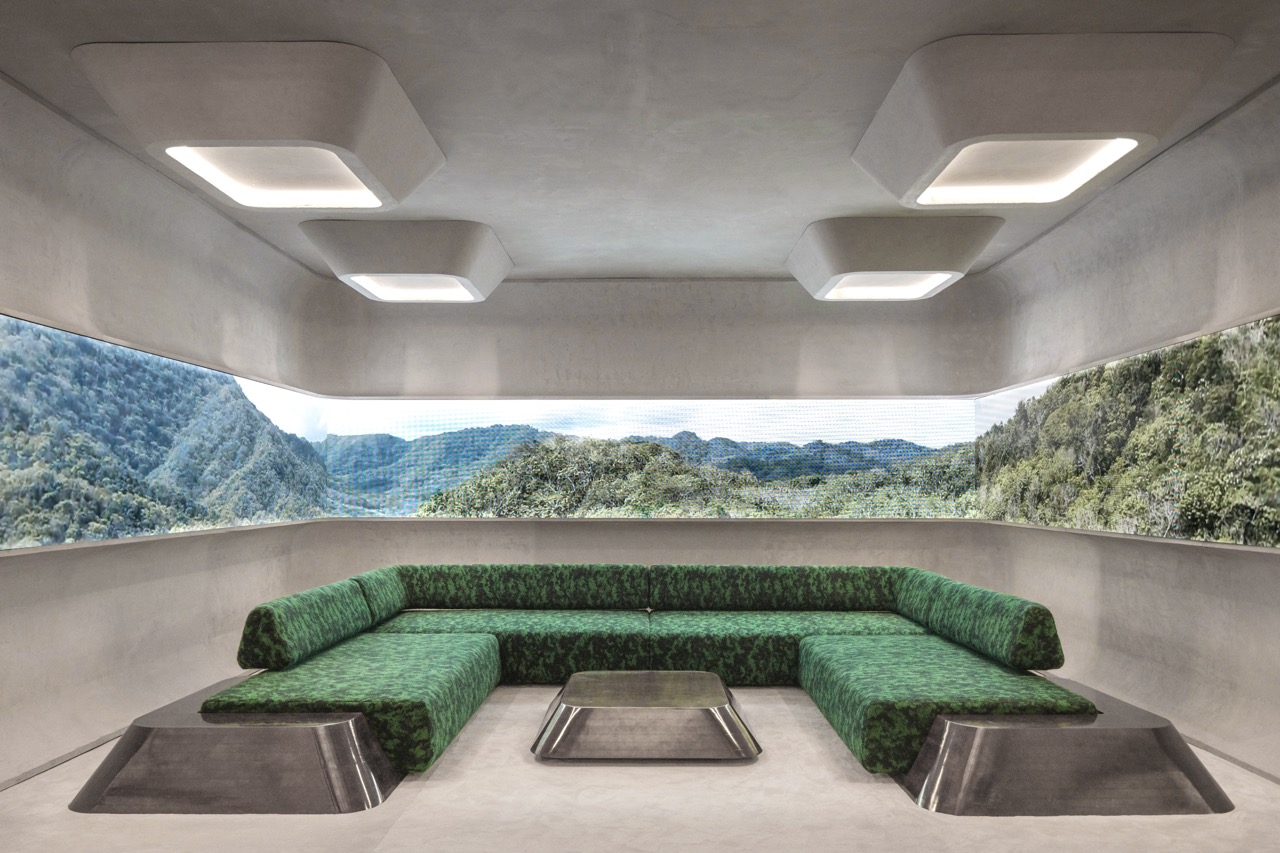A Chicago museum will soon host a major retrospective of a groundbreaking feminist artist—and the institution is using the opportunity to highlight the gender wage gap that continues to impact millions. Filmmaker and photographer Laurie Simmons has spent nearly five decades making work that interrogates gender archetypes and domesticity, so it makes sense that the upcoming survey of her work at the Museum of Contemporary Art in Chicago—called Big Camera/Little Camera, a reference to one of her most famous works—coincides with a feminist gesture by the museum: Anyone who has been affected by the gender pay gap will be offered $12 admission—rather than the standard $15 ticket cost. The reduced price is roughly 81% of the regular cost—a percentage that reflects the average pay gap in the United States, according to data from the Institute for Women’s Policy Research.
- Laurie Simmons, Walking House, 1989. COURTESY OF LAURIE SIMMONS AND SALON 94.
- Laurie Simmons, Some New: Grace (Orange), 2018. COURTESY OF LAURIE SIMMONS AND SALON 94.
The price reduction will be offered throughout the full run of the Simmons exhibition, which is on view from February 23 through May 5. The discount will be instituted “in honor of Laurie’s activism to expose inequality across the lines of gender, sexuality, and race,” says MCA Director Madeleine Grynsztejn in a release.
The exhibition is the first comprehensive retrospective of Simmons’ work—which notably includes photographs of stylistically staged dolls, props, and dummies, often presented in domestic miniatures or mythically loaded scenes, like the American West. It will also feature a sculpture installation and three films, including The Music of Regret, which counts Meryl Streep and Alvin Ailey dancers among its cast.
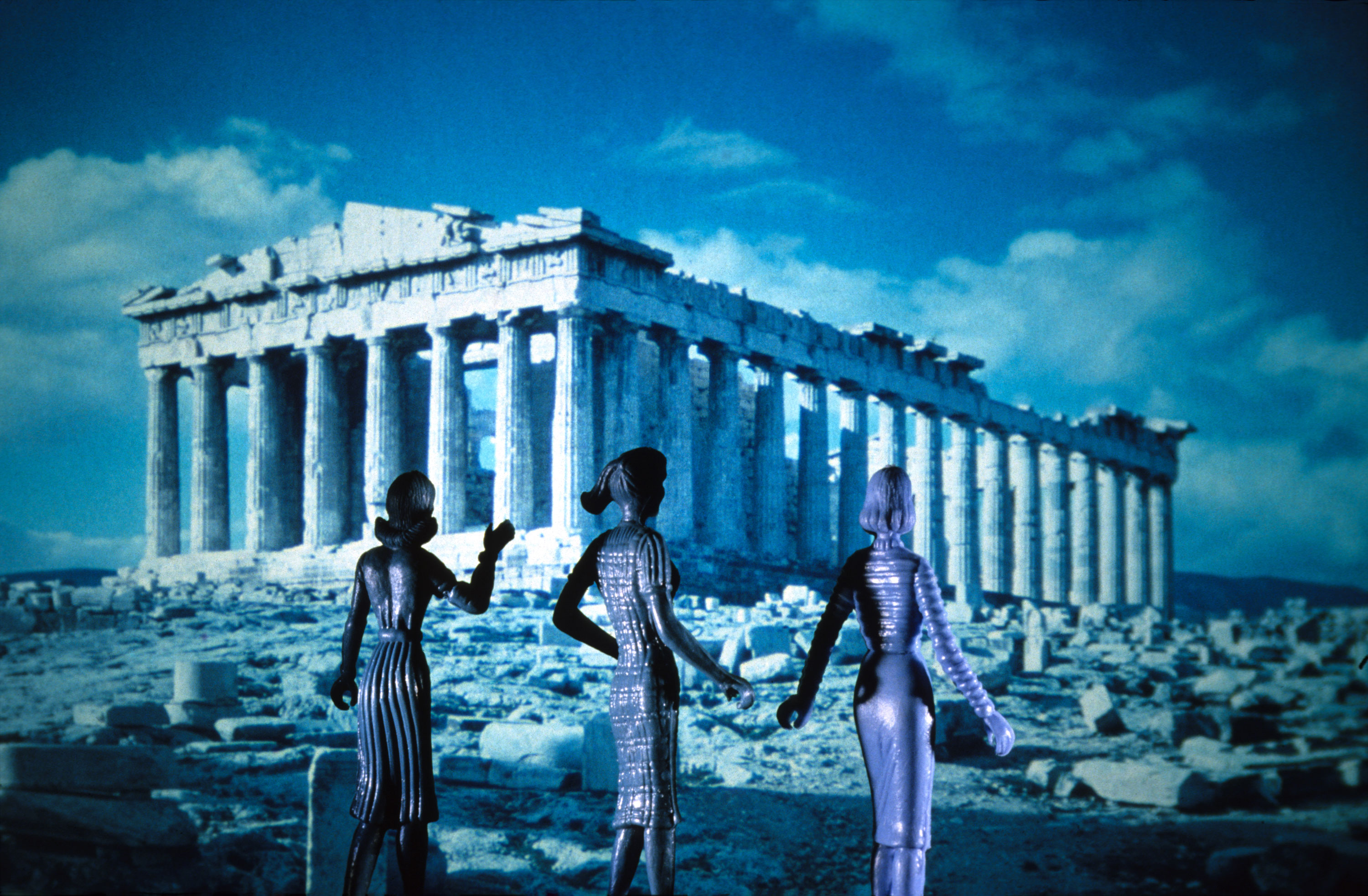
Laurie Simmons, Tourism: Parthenon/First View, 1984. COURTESY OF LAURIE SIMMONS AND SALON 94.
Film fans might also recognize Simmons from Tiny Furniture (2010), which Lena Dunham—Simmons’ real-life daughter—wrote, directed, and starred in. The mother-daughter duo plays fictionalized versions of themselves in the movie, which marked a breakout moment for Dunham.
The title of the exhibition references Simmons’ 1976 photograph of the same name, which depicts a miniature camera replica dwarfed by a real camera. “I put the two cameras together for scale, and as a metaphor—real life versus fiction. It was also a statement about what I intended to do with the camera,” says Simmons in a release.

Laurie Simmons, Big Camera/Little Camera, 1976. COURTESY OF LAURIE SIMMONS AND SALON 94.
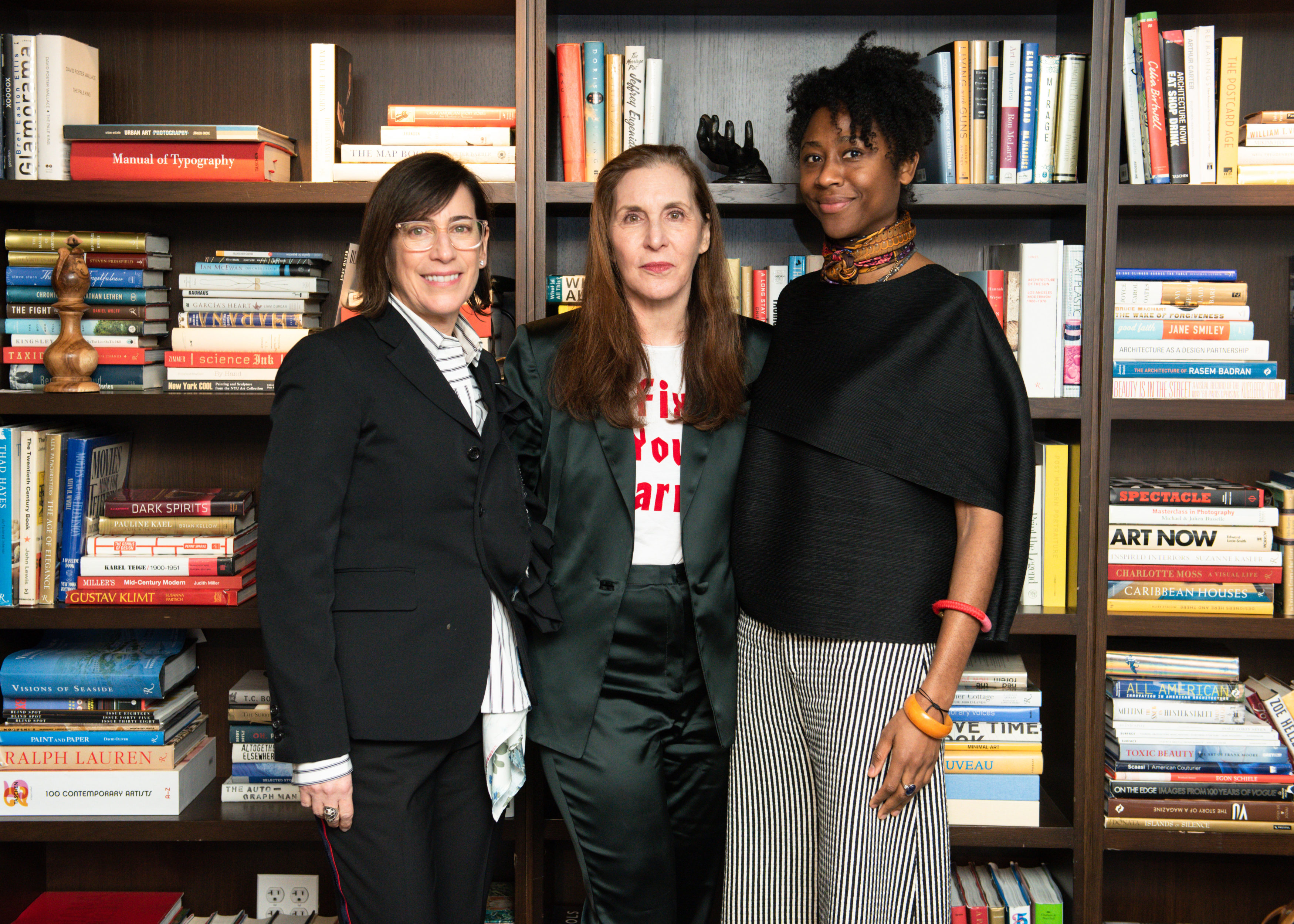
MCA Director Madeleine Grynsztejn, Laurie Simmons, and MCA Senior Curator Naomi Beckwith. PHOTOGRAPHY BY GRIFFIN LIPSON.
See more photography, visual art, and news stories on Sixtysix.
